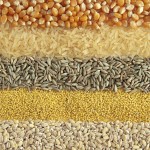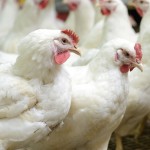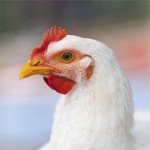Humans have over 10,000 taste buds, chickens 20-30. As a poultry nutritionist I do not worry that the chickens will not like the taste of the feed, I worry that because the only feed they get is from the recipes I make that the feed meets all their nutritional needs. As in humans, chickens require energy, protein, vitamins, and minerals of which all are referred to as nutrients.
In chickens The Canadian Food Inspection Agency sets the regulations for the ingredients that can be used in feed. CFIA has the Feed Regulations with Schedules IV and V. These schedules are lists of ingredients that have been evaluated and approved by CFIA for manufacture, import, and sale for use in livestock feed in Canada. Schedule IV is divided into several classes of feed ingredients (energy or protein ingredients, vitamins, and minerals) with detailed descriptions, standards, and labeling requirements.
All ingredients contain protein, energy, vitamins and minerals but all are different as to the levels of these nutrients that they provide. The main function of corn, wheat, and fat in poultry feed is to provide energy. For the western provinces, wheat is the main energy source vs. in the east, and in the United States, corn is the main energy provider. Why the difference? In Alberta and Saskatchewan wheat is the main crop grown, Manitoba grows both corn and wheat, and in Ontario corn and soybean meal are grown locally. This answers the question of why some chicken is yellow and some white. Corn has pigments called xanthophylls which are responsible for the yellow color of the chicken in Ontario and the United States. Energy level of all ingredients is measured in kilocalories (kcal). Because the grains can only supply a certain level of energy and we have to also be able to meet their protein, vitamin, and mineral requirements we can use pure fat or oil (vegetable, animal, or a blend) to obtain the energy level the bird needs. Fat is akin to butter, margarine, and oil that we use to cook with. As nutritionists we use the term nutrient density to describe the energy and protein level of the feed.
Soybean meal, peas, canola meal provide protein. Protein is equal to nitrogen multiplied by 6.25% and is expressed as a percentage. Soybean meal for example is usually between 44-46% crude protein. Dietary protein is made up of 22 amino acids. We can fulfill some of the amino acid requirements using the pure forms of amino acids available which are lysine, methionine, threonine, and tryptophan but the rest have to be supplied by the major protein ingredients. These pure amino acids help us lower the total protein level in the ration which is healthier for the bird as they do not have to work to excrete the excess protein. Amino acids are ranked in terms of their ability to limit growth and reproduction, the first limiting are the sulfur containing amino acids methionine and cysteine and the second is lysine. Vitamin and mineral requirements which fulfill all the bird’s requirements for a healthy chicken are determined by the breeding companies for each breed of chicken. The CFIA also sets minimum and maximum levels for vitamins and minerals in order to ensure that no chickens are grown without adequate supplementation or conversely fed levels that could be toxic to them.
Generally, the growth period of the chicken is divided into four or five stages. The stages are broken down by age with a program such as 0 to 14 days, 15 to 21 days, 22-28 days, 29-35 days and 35 to 42 days. During these stages energy increases and protein levels decrease because as the chicken gets older feed intake increases and they are able to get more nutrients out of a lower density feed. A balanced diet, as is the case for humans also, contains levels of energy, protein (amino acids), vitamins, and minerals which produce a healthy, strong chicken.
As all humans are not the same size and shape neither are chickens. Therefore, it makes designing feeds that much more critical to make sure we supply all the nutrients the smaller bird needs because they eat less than their bigger brother. The goal in designing rations is to have a healthy, happy chicken.



